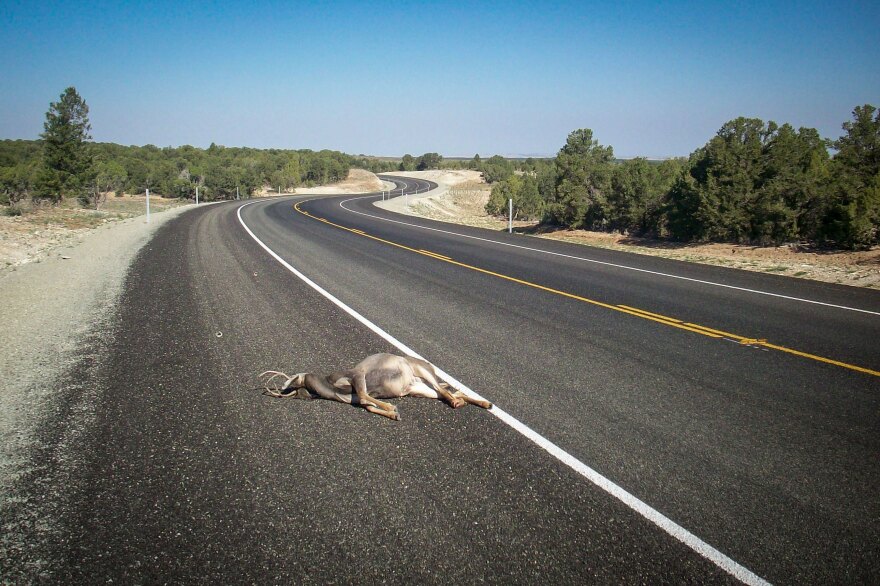When a driver hits a 600-pound elk, Utah authorities generally hear about it. A collision with a tiny canyon treefrog, on the other hand, likely falls under the radar.
“When people hit those smaller animals, there’s generally not as much damage to their vehicle,” said Blair Stringham, the Utah Division of Wildlife Resources migration initiative coordinator. “There's less of a public safety hazard.”
As a result, he said, the state has missed out on data about smaller animals’ behaviors and the dangers they face. With a little help from Utahns and their smartphones, however, that’s beginning to change.
A year ago, the state launched the Roadkill Reporter app, which invites the public to submit information about carcasses they spot on Utah’s roadways. The reports are providing valuable information on a wide variety of species the state didn’t have data on previously, he said, from snowshoe hares to red foxes to those little frogs.
“That's really been eye-opening to us,” Stringham said. “We're going to start getting a lot of good information on badgers, porcupines and some of these nontraditional species we haven't really looked at in the past.”
Without the data, he said, the state may never know how big of a factor vehicle collisions play in the mortality of those species.
As more app users become the state’s eyes and ears on Utah’s highways, their reports can boost biologists’ understanding of animal migration routes and better inform decisions about how to prevent collisions.
“We're not everywhere all the time,” he said. “So this is a really good way for us to get a better idea of how many animals are actually being hit each year.”
Users reported 3,843 animal carcasses in the first year. A vast majority involved deer, and that’s likely just the tip of the iceberg — estimates are that roughly 10,000 deer are hit and killed in Utah each year. There were also 157 elk deaths, and multiple reports involving black bears, turkeys, cougars, bighorn sheep and coyotes.
The sooner state crews know about roadkill, the sooner they can remove it, Utah Department of Transportation Natural Resources Manager Matt Howard said. That can help prevent future vehicle collisions with scavengers, such as eagles, that might get hit while feeding on a carcass in the road.
When the state overlays carcass data with car crash reports and information from tracking collars on migrating animals, it can pinpoint hotspots.
“We try to identify places where those three data sources line up,” Howard said, which helps them decide where to add wildlife crossings. It also helps make more of those projects possible. Having solid numbers bolsters the state’s case when it applies for federal money, he said.
The first year’s dataset is already producing results. Howard said it helped the state win a federal grant for more than $5 million to install fencing and underpasses along US-89 east of Kanab to get deer safely from one side of the highway to the other.
Wildlife crossings not only prevent crashes, he said, but also significantly expand the range where animals can safely find habitat. As the app brings in more data, Howard said, it’ll help the state better understand how the state’s drivers and animals can coexist.
“By opening it up to other people who have different goals and motivations when it comes to wildlife collisions, we're able to collect a more diverse set of wildlife species.”






